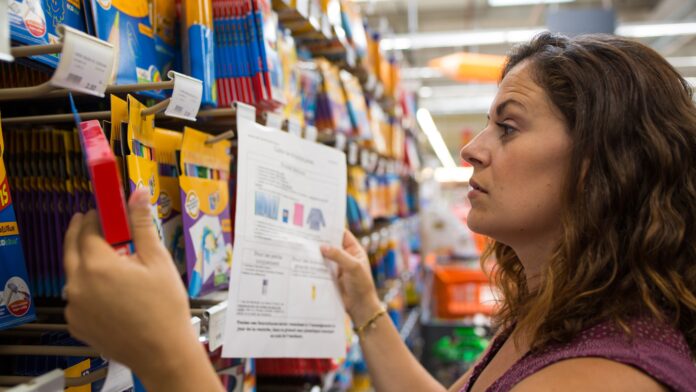By Sarah Wall
It’s mid-August, which can mean only one thing: across America, millions of kids are getting ready to go back to school. Some will be in in-person classes for the first time since March 2020, adding a whole new level to back-to-school shopping. In 2019, the average parent spent a whopping $790 per child on back-to-school shopping. What will the price tag look like when parents look at a school shopping list for the first time in 1.5 years?
Parents, you do not need to panic. Here are five simple, effective strategies to saving on back-to-school shopping, and your kids likely won’t notice any difference.
Before You Leave…
Organize Your List
Getting your shopping list organized before you leave is the first step to big savings. First, look at the supplies your kids already have on hand and dig through their closets for school clothes that still fit. Then, take a look online or in catalogs for coupons, which will allow you to organize your list by store: if Wal-Mart is running a great sale on 3-ring binders, and Costco has a discount on bulk printer paper, your list will guide you to the best possible savings.
Swap Supplies with Friends and Neighbors
Virtual and hybrid schooling models may have resulted in unusually high use of some materials. For instance, maybe the shift towards computer worksheets means you’re dangerously low on printer paper, but the four binders from last year are untouched. To rebalance your children’s supply lists, ask friends and neighbors if they’re similarly lopsided and would be willing to trade: say, two of your binders for a ream of printer paper. Bartering school supplies in the neighborhood could even become part of an end-of-summer potluck barbeque – one that could save you quite a bit of cash!
When You Go…
Time It Right
While it’s tempting to knock out the list in one trip, try to resist the temptation if you can: making a few trips can make budgeting easier. Make your first shopping trip the one where you buy the particular items that rarely go on sale, such as that TI-84 calculator the Algebra teacher requires, as well as anything on your list that’s discounted. Wait until the last minute to buy the basics, such as pens, pencils, and paper: prices usually drop substantially as stores try to clear out the product.
Plus, unless your kids are in desperate need of a brand-new wardrobe, wait to buy clothes until mid-September or even early October, when prices will drop off from the fall fashion rush. One money-saving parent recommends buying your student the quintessential First-Day-of-School outfit but holding off a few weeks for other clothes unless absolutely necessary.
Hit the Dollar Store First
Some of those basic essentials, like pencils and crayons, can easily be knocked off your list with a quick trip to the dollar store. For items where top-quality isn’t a major concern, discount stores, including Five Below and Dollar General, can be a great option to save on the budget. For items that require more durability, like a backpack, it’s probably better to buy a quality one you find on sale: otherwise, you might be returning to the store to buy a replacement sooner than you’d like.
Make School Shopping a Teachable Moment
It’s never too early to teach your children to be financially aware. Consider making your shopping trip a teaching opportunity on how to build a budget. Help them make estimates for basic supplies, high-tech items like calculators and tablets, and clothing. Then, while you’re shopping, show them what happens to their list if they blow their budget on the latest Nike backpack. Not only will your children learn why they can’t have everything they want, it will also give them a greater appreciation for the value of what they do have. As a bonus, they’ll also practice math skills adding everything up!
With some planning, organization, and a few budgeting techniques, school supply lists don’t have to break the bank. While you focus on strategies to cut costs in practical and effective ways, you’ll leave your kids free to focus on what’s most important: getting ready to thrive in the new year.

Sarah Wall is a contributing writer for Smart Women Smart Money Magazine. For questions or comments email [email protected].










